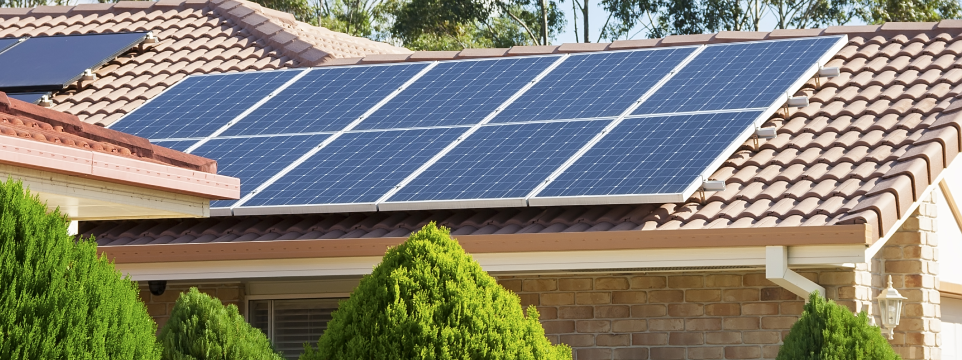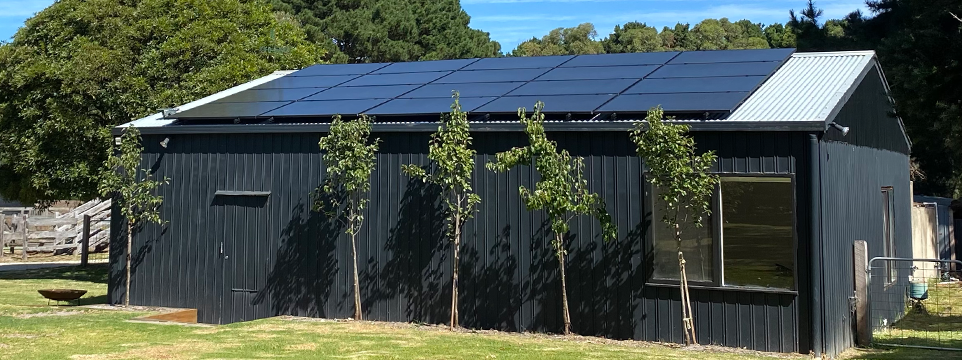Standard or black solar panels – what’s the difference?
Standard or black solar panels – what’s the difference?
When it comes to installing solar panels, one question that often arises is whether to opt for standard blue panels or go for sleek black ones. Both have their merits and drawbacks, and the best choice will depend on various factors like aesthetics, efficiency, and cost.
How They Look
One of the biggest difference with standard and black panels is how they look when they are up there on your roof.
Standard panels, typically have a blue hue due to the multiple silicon crystals they contain and usually have a silver aluminium frame. These panels are widely used, have a traditional solar look, and tend to be more cost-effective upfront. They can be a bit more conspicuous on your roof, depending on its colour and material, which may or may not appeal to you.

Black panels (often referred to as ‘all-black’ or ‘full-black’), consist of single-crystal silicon and have a uniform black appearance and usually have a black frame. These panels offer a sleek, modern aesthetic that many homeowners find appealing. They blend in more seamlessly with darker roofing materials, offering a more integrated look.

Cost
When it comes to cost, standard panels are typically the more budget-friendly option, making them a popular choice for those looking for a cost-effective solar solution. On the other hand, all-black panels can be a bit pricier, largely due to the use of monocrystalline cells, which are generally more efficient than the polycrystalline cells found in standard panels. However, it’s important to consider that higher efficiency can mean you’ll need fewer panels to achieve your desired energy output. This can offset the higher per-panel cost, making the overall system price competitive, or even cheaper in some cases.
Efficiency & Power Output
In terms of efficiency, or the conversion of sunlight into electrical power, all-black panels and standard panels have distinct characteristics. All-black panels often use monocrystalline cells, renowned for their higher efficiency in converting sunlight to electricity. Standard panels usually feature polycrystalline cells, which are generally less efficient in this regard. However, brand quality can alter this dynamic, and some standard panels from premium brands may rival or exceed the efficiency of all-black panels from other manufacturers.
When it comes to power output rating, also known as power capacity or peak power, both types of panels can vary widely. This rating signifies the maximum amount of power a panel can produce under ideal conditions. While it might be tempting to assume that all-black panels, often associated with higher efficiency, would naturally have higher power output ratings, this isn’t always true. The power output of standard panels from high-quality brands can be just as competitive, if not more so, depending on technological advancements and design features.
Standard panels often employ polycrystalline cells and generally tend to be more heat-tolerant, but they usually lag behind in efficiency compared to all-black panels, which commonly use monocrystalline cells. However, it’s important to note that these are general trends, and exceptions abound. Different brands offer varying levels of efficiency and power output—sometimes referred to as power rating, power capacity, or peak power—within both standard and all-black categories. For example, a high-end standard panel could offer a wattage rating comparable to or even exceeding that of an all-black panel from another brand.
Thermal Performance
Thermal performance is another important factor to consider. Standard panels are generally more heat-tolerant due to their contrasting colours, which help in dissipating heat more effectively. All-black panels, because of their uniform colour, can absorb more heat and are potentially less efficient on extremely hot days. However, this difference is generally minimal and may not significantly impact overall performance depending on your specific location and installation.
Conclusion
Choosing between standard and black solar panels is a decision that should factor in your aesthetic preferences, efficiency needs, and budget considerations. Each type has its pros and cons, and your unique circumstances will determine the best fit for your home. Consulting with solar professionals, like those at Arkana Energy, can provide tailored advice to ensure you make the most out of your solar investment.
